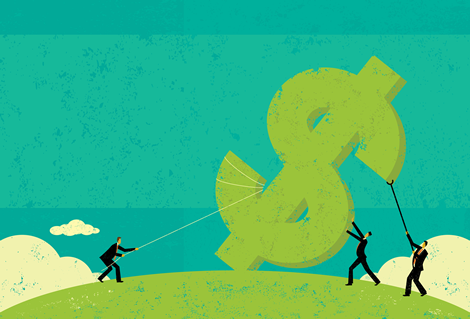
THE primary goal of many organisations is to maximise shareholder value. This implies that the ultimate measure of a company’s success is the extent to which it enriches shareholders.
This has a great influence on a company’s strategic management process and this article will focus on strategic cost reduction as a way of creating better business value that results in the maximisation of shareholder wealth.
Strategic cost reduction
Strategic cost reduction is the process of redirecting resources in a more efficient manner that results in growth stimulation and the creation of a differential advantage for the company. It involves perfecting an organisation’s operational capability, thus creating a competitive advantage in a fast-evolving marketplace.
Many cost reduction opportunities exist across a value chain of an organisation, and they differ from industry to industry. It is important that a company sets up cost reduction methodologies and has an effective cost management framework in place.
Good costs versus bad costs
Strategic cost reduction does not mean that companies just cut costs. It means that a framework is put in place that helps to redirect resources to the revenue generating activities or operations in an organisation.
This can be achieved through an analysis of bad costs versus good costs, which involves the shifting of resources from low-return segments to higher value opportunities.
- Chamisa under fire over US$120K donation
- Mavhunga puts DeMbare into Chibuku quarterfinals
- Pension funds bet on Cabora Bassa oilfields
- Councils defy govt fire tender directive
Keep Reading
Costs are aligned in a way that matches the overall growth strategy of an organisation. The question becomes, “how do you separate good costs from bad costs?”
Good costs are the critical areas of spending in a business. The following are characteristics of good costs:
Good costs drive growth of an organisation
They are targeted for investment purposes
Good costs enable a business to create new value propositions
They act as a business differentiator and allow organisations to better reach their targeted market and consumers.
Good costs support business capabilities and generate real returns in the medium term
Bad costs are the non-essential areas of spending in a business that are not aligned to the overall direction a business plans to take. The following are characteristics of bad costs:
Bad costs are linked to inefficient operations, that do not add value to business operations
Bad costs are associated with low performing business operations that waste resources and hold back returns
They are usually a short-term fix to a problem
Bad costs do not create additional assets for an organisation
It is thus imperative for an organisation to ascertain their critical activities that add value to their organisation.
Companies need to more accurately identify investment opportunities that maximise their strategic advantage and forgo inefficient operations. Thus, redirecting resources from redundant undertakings to value generating ventures. This can be achieved through strategic cost analysis.
Strategic cost analysis
This is the process of identifying, analysing and using strategic resources for the continued success of a business. It will result in minimising exposure to bad costs and maximising investments in the good costs.
This will help achieve a more resilient company growth model.
Significant cost savings can be realised and more profitable growth avenues explored. It will also ensure that quality of products and customer relationships are not compromised.
Bad costs can be cut at micro (ground-level) and macro level (structure level), and good costs can also be maximised at macro and micro level. Measures implemented at a macro level may have a stronger and larger impact financially.
This strategic cost analysis process will help create a cost-conscious culture in an organisation. It is, however, crucial that an organisation does not cut the wrong costs as this has dire consequences.
Effects of cutting bad costs
The redirection of resources to revenue generating activities should either maintain quality or improve quality of products and not lead to quality reduction. It should be a way of investing in the strengths of an organisation.
It should enable the creation of unique value for customers. Cost management should support the strategy of an organisation and fuel the organisation’s growth.
The rechannelling of resources should lead to increased efficiency. Cost savings should be channelled towards bettering innovation and the support of research and development processes. Measures implemented should be sustainable and lead to a cost-conscious culture and a mind-set shift among employees.
It is important that organisations do not lose sight of their strategy towards achieving their goals.
An organisation’s costs should always reflect its strategy. Customer needs are constantly evolving and businesses need to be more innovative and responsive to remain competitive.
Resources should be directed to areas that strengthen the operational capabilities of organisations and result in greater profits while supporting the growth model of an organisation.
Strategic cost reduction through identifying the bad and good costs and then redirecting the costs may not be easy or welcome among employees but the end results will be a stimulation of growth for the organisation and the creation of a differential advantage that ensures that the organisation will remain competitive.
- Chimhofu is an auditor at Deloitte and Touche, Harare. — [email protected]: Nigel Albert Chimhofu. LinkedIn: Nigel Albert.











